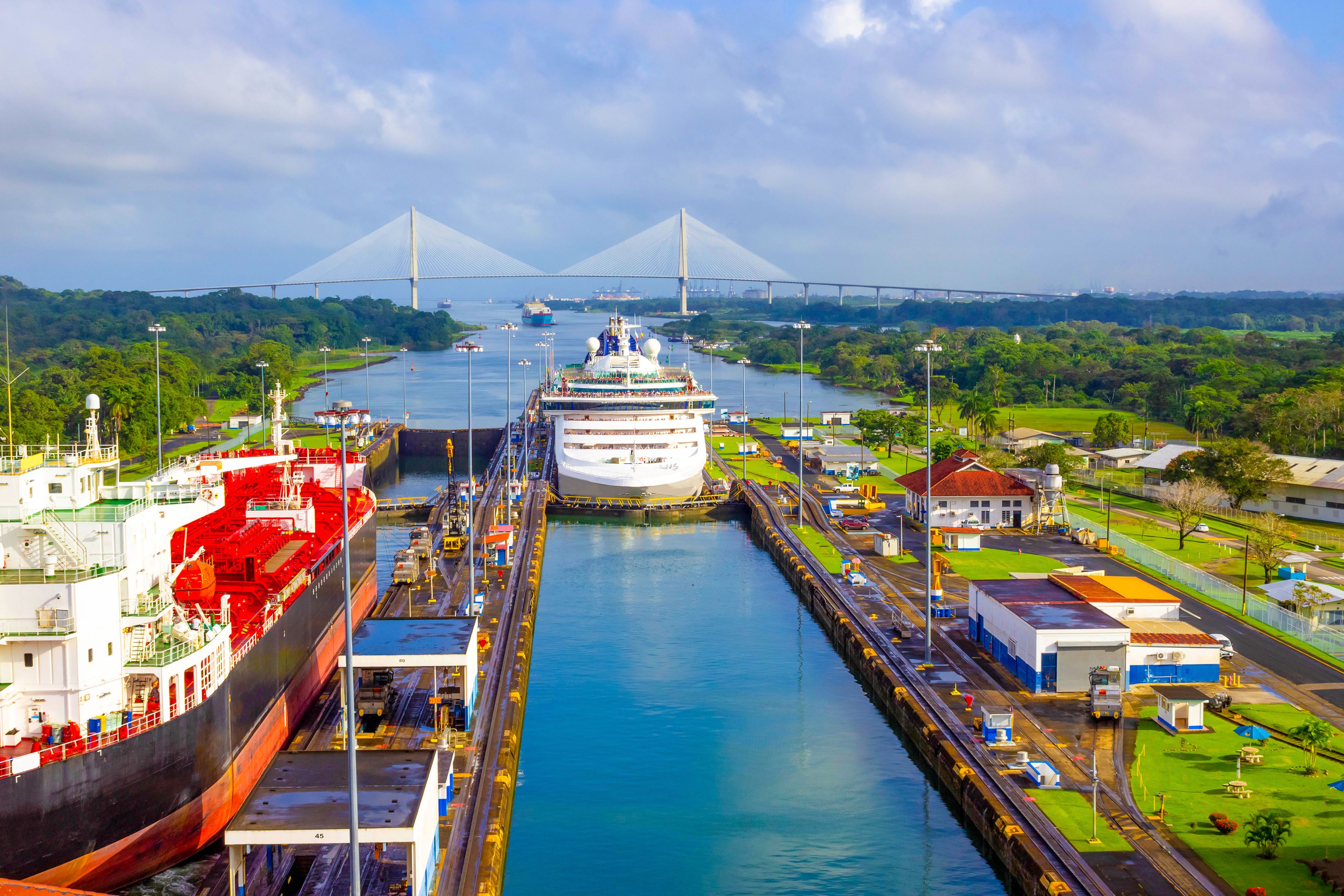
Matt Vick, academy trade and customs specialist at the Institute of Export & International Trade (IOE&IT), outlines what the recent drought in the Panama Canal might mean for traders.
The Panama Canal, along with the English Channel, Suez Canal and Malacca Straits, is one of the key arteries for international trade.
However, as reported previously by the IOE&IT Daily Update, a drought has forced authorities there to restrict the number and weight of ships passing through the canal.
This means that any UK businesses trading with many South American countries – such as Peru, Chile and Ecuador – may experience shipping delays as the Panama Canal is the most common routing for vessels out of those countries.
Additionally, anyone trading with western Mexico and US states such as California can expect some delays. As we have seen in other key trade lanes, these bottlenecks can also lead to the imposition of congestion fees by carriers. Hapag-Lloyd have already announced an additional surcharge.
Risk of blockage
In the worst-case scenario, a vessel could get stuck, and few of us wish to see a repeat of the Suez Canal incident of 2021, where the ship Ever Given was stuck in the Egyptian shipping passage for over a week. There are alternative shipping routes, but generally these will add to transit times and costs.
If the prospect of delays concerns you, get in touch with your freight forwarders or carriers and check what options you have available.
Fruit and vegetable season
During the vital months of November this year to March 2024, much of South American shipping is focused on exports of fruit and vegetables, generally via refrigerated containers (known as ‘reefers’). For Peru, Chile and Ecuador, much of that produce will be routed via the Panama Canal.
If these droughts continue, not only could the export of fruits and vegetables be impacted, but we could expect similar restrictions on access to the Panama Canal to continue, extending transit times and squeezing up costs even more for UK importers.
A wake-up call?
And these droughts are not isolated to the American continent.
The Rhine has been facing lower than normal water levels over the last couple months, due to prolonged hot weather in Europe. This has resulted in similar restrictions in the maximum capacity of vessels allowed to transit along the river and the delta, while the Danube has faced similar restrictions in the past.
This is especially problematic for the central European nations that rely on canals and inland waterways to move goods within their territory.
Canals in Asia, such as China’s Beijing–Hangzhou Grand Canal, the Karakum Canal in Turkmenistan and the Indian Buckingham Canal have also faced drought conditions in the past, threatening global supply chains as well as the everyday water supply for millions of people.
With climate change and extreme temperatures increasingly common, it is likely that we will see more supply chain disruptions to imports and exports. Traders should be aware of the impact these will have and the best way to mitigate this.



